
When choosing equipment for your building, it’s important to understand the difference between an on off valve and a control valve. An on off valve, such as a ball valve or butterfly valve, is designed to simply start or stop the flow. In contrast, a control valve, like a pneumatic control valve or an electric valve, allows you to precisely adjust the flow as needed. These types of valves are widely used in industries including:
- Petrochemical
- Oil & Gas
- Water Treatment Plants
- Power Plants
Understanding how on off valves, butterfly valves, ball valves, electric valves, and pneumatic control valves function will help ensure your system operates safely and efficiently.
Key Takeaways
- On/off valves act like switches. They are either open or closed. These valves are good for fast shutoff and safety.
- Control valves can change flow very carefully. They help control pressure, temperature, or flow smoothly.
- Pick on/off valves for easy tasks like emergency shutoff. They are also good for isolation and batch jobs.
- Use control valves when you need to control flow exactly. They help keep pressure steady or control temperature.
- On/off valves are easy to use and last a long time. They do not need much care, so they save time and money.
- Control valves are harder to use and cost more. They need more care but help the system work better.
- You must pick the right valve for your job. Think about what you need, the fluid, pressure, and care plans.
- Do not make mistakes like picking the wrong size. Do not mix up valve jobs. This keeps things safe and working well.
On/Off Valves
Definition
You use an on off valve when you want simple flow control. These are called block valves in industry. They stop flow when closed and let all flow through when open. You do not use them to change how much flows. These valves work best when you need all or nothing, like for isolation or emergency shut-off. The main parts are a body, a closure part like a ball or gate, a seat, and a stem. The closure part moves to let flow or stop it. Some valves have a full opening that matches the pipe size for max flow. Others have a smaller opening and cause more pressure drop.
- Block valves work in two ways: fully open or fully closed.
- You use them for isolation, shut-off, and batch jobs.
- Common types are ball, gate, plug, and butterfly valves.
- API 6D sets rules for design and quality in oil and gas.
How On/Off Valves Work
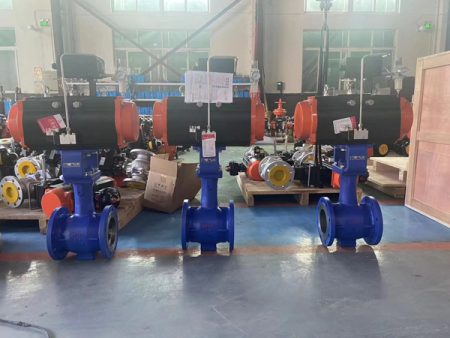
On/off valves move an inside part between two spots. It is like a light switch that is only on or off. When you use the valve, the closure part moves to block or let flow. For example, a ball valve has a ball that turns 90 degrees to open or close. A motor or handle gives the force to move the valve. Springs can hold the valve in one spot until you move it. You can use handles, pilot pressure, or solenoids to move the valve. Some valves use more than one way to make sure they work. The valve always works in a simple way, so you get all flow or no flow.
Tip: On/off valves are easy and work well. You do not need fancy feedback or exact changes.
How the binary operation works: 1. A control system sends a signal to the actuator. 2. The actuator turns the signal into movement. 3. The valve part moves to open or close. 4. Springs or safety parts may hold the valve in one spot. 5. Position feedback checks if the valve is in the right spot. 6. The valve only works in two ways: on or off.
On/Off Valve Types
You can pick from different on/off valves for your needs. Each type works in its own way and fits certain jobs.
Ball Valves
Ball valves have a hollow ball that turns inside the valve. You turn the handle or motor a quarter turn to open or close it. Ball valves work fast and shut off well. You use them for liquids, gas, or vapor. They work in low or high pressure and temperature. Ball valves are not good for changing flow or thick stuff.
Gate Valves
Gate valves have a gate or wedge that moves up and down to block or let flow. You turn a wheel or motor to use the valve. When open, gate valves do not slow down flow. You can use them for flow in both directions. They work for wastewater, neutral liquids, and gases. Gate valves are not good for changing flow and can get damaged if used that way.
Butterfly Valves
Butterfly valves have a flat or curved disc that turns a quarter turn to open or close. These valves are small and light. You get little pressure drop when open. Butterfly valves work for water, gas, big pipes, slurries, and very cold uses. They do not give exact flow control, and pressure can move the disc.
| Valve Type | Mechanism & Operation | Advantages | Disadvantages | Typical Applications |
|---|---|---|---|---|
| Ball Valve | Quarter-turn, hollow ball disc | Fast use, great shut-off | Not for changing flow, thick stuff | Liquid, gas, vapor; low/high pressure/temp |
| Gate Valve | Up/down motion, gate/wedge disc | No flow slowdown, both ways | Not for changing flow, disc damage | Wastewater, neutral liquids, gases |
| Butterfly Valve | Quarter-turn, flat/curved disc | Small, light, low pressure drop | Not exact, pressure moves disc | Water, gas, big pipes, slurries, very cold |
Key Features
When you pick an on off valve, it works in a simple way. You can open it all the way or close it tight. You do not change how much flows through. This makes these valves easy to use and very dependable. People use them when they need quick action or a safe shut-off.
Here is a table that shows how on/off valves are different from other valves:
| Valve Type | Key Features | Operation Mode | Typical Applications |
|---|---|---|---|
| On/Off Valves | Fast-acting, binary open/close operation; no precise flow modulation; often self-actuated or electrically actuated | Fully open or fully closed | Emergency shut-off, rapid cycling, remote control |
| Solenoid Valves | Use linear sliding obstructer; available in various sizes and materials; handle extreme temperatures | Fast response; electrically actuated | Emergency shut-off, high-pressure systems, cryogenic processes |
| Coaxial Valves | Self-actuated; smaller, lighter, faster; limited fluid compatibility and lower flow capacity | On/off, precise control of liquids and gases | On/off applications requiring speed and safety |
| Angle Seat Valves | Self-actuated; faster acting, less expensive, longer service life than ball valves; handle viscous and contaminated media | On/off operation; not ideal for particulates; suited for lower pressure | Vacuum applications, chemical, water, sewage, food and beverage systems |
| Other Valves | Multi-turn, linear operation; designed for throttling and precise flow control rather than simple on/off | Gradual opening/closing for flow modulation | Applications requiring flow regulation and precise control |
On/off valves are special because they work fast and do not let you change the flow. You can use electric or manual parts to move them. Many on off valves have strong bodies that keep out dirt and junk. This helps them last longer and work well in tough places. You can hook these valves to safety systems for automatic shut-off. You also get remote control for extra safety.
Tip: On/off valves give you safe shut-off even with high pressure. You can count on them to stop dangerous fluids and keep your equipment safe.
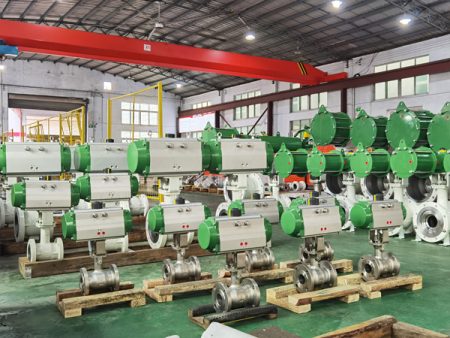
Common Uses
On/off valves are used in many jobs because they work fast and do not break easily. You see them in emergency shut-off systems a lot. They are also used for isolation, batch jobs, and quick start or stop tasks.
Here are some ways people use on/off valves:
- Emergency shut-off: You can stop flow quickly to avoid accidents or leaks.
- Isolation: You split up parts of a system for fixing or safety.
- Batch processing: You start and stop flow for each batch you make.
- Remote control: You move valves from far away for safety or ease.
- Rapid cycling: You open and close valves many times in a short time.
You find on/off valves in chemical plants, water treatment places, oil refineries, and food factories. Solenoid valves are good for emergency shut-off and high-pressure work. Coaxial valves work fast in small spots. Angle seat valves handle dirty or thick stuff in sewage and food plants.
When you use an on off valve for emergency shut-off, you get many good things:
- You get tight shut-off, even with high pressure.
- You keep your equipment safe by stopping flow in emergencies.
- You stop dangerous leaks and keep the area safe.
- You cut down on downtime and keep things running well.
- You can connect the valve to automatic systems for quick action.
On/off valves help you keep your workplace safe and your jobs running smoothly. You can trust them for fast work and easy setup.
Control Valves
Definition
You use a control valve when you need to adjust how much fluid moves through a pipe. In automatic systems, people call it a “final control element.” This means it is the last device in the control loop that changes the flow. A control valve has three main parts. The actuator moves the valve. The positioner makes sure the valve opens to the right spot. The valve body holds the moving part that changes the flow. You can use electric, hydraulic, or pneumatic power to move the actuator. Unlike on/off valves, a control valve can stop anywhere between fully open and fully closed. This lets you control flow, pressure, temperature, or liquid level with great accuracy.
How Control Valves Work
Control valves help you keep your system steady. They do this by changing the size of the opening inside the valve. When your system needs more or less flow, the actuator moves the valve to the right spot. Sensors check things like pressure, flow, or temperature. The control system sends a signal to the actuator. The actuator then moves the valve to let in more or less fluid. This process is called modulation. You can use a modulating valve to keep a room at the right temperature or to make sure a tank does not overflow. Some valves use feedback loops. These loops sense what is happening and adjust the valve to keep things just right. For example, if the pressure drops, the valve opens more to keep the flow steady. This is called throttling. You get smooth and stable fluid control with this method.
Here is a table that shows how control valves regulate different things:
| What You Control | How It Works | Example Use |
|---|---|---|
| Flow | Actuator moves valve trim to change flow area | Keep water flow steady in a pipe |
| Pressure | Valve senses pressure and adjusts opening to keep pressure constant | Maintain safe pressure in a boiler |
| Temperature | Valve changes flow of hot or cold fluid based on temperature feedback | Control heat in a chemical process |
Note: You can use control valves with sensors and digital controls for very precise results.
Control Valve Types
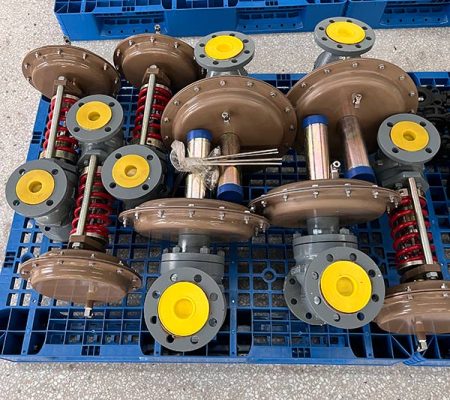
You can pick from many types of modulating valves. Each type works best for certain jobs. Here are three common types you will see:
Globe Valves
Globe valves use a round plug that moves up and down inside the valve body. You get very fine control with this type. You can use a globe valve for flow control in heating or cooling systems. It works well when you need to change the flow often. The shape of the globe valve helps you get smooth and steady changes.
Diaphragm Valves
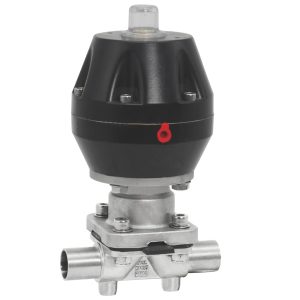
Diaphragm valves use a flexible sheet, called a diaphragm, to open or close the flow path. When you move the actuator, the diaphragm bends and changes the opening. You can use these valves for fluids that have solids or are very clean. Diaphragm valves are good for chemical plants and water treatment because they do not leak easily.
Needle Valves
Needle valves have a long, thin point that fits into a small seat. You turn the handle to move the needle in or out. This lets you make tiny changes to the flow. You use needle valves when you need very fine adjustments, like in lab equipment or gas lines. They are a type of modulating valve that gives you great control over small flows.
- You can also find other modulating valves, such as ball valves with special shapes, but globe, diaphragm, and needle valves are the most common for precise control.
Key Features
When you pick a control valve, you get better control. You can change the flow to any level you want. This is different from on/off valves. A control valve does not just open or close. It can stop anywhere in between. The actuator and positioner help move the valve to the right spot. Sensors check the flow and send signals to the system. This helps you always get the right amount.
Some important things about control valves are:
- Modulating Operation: You can set the valve at any spot. It does not have to be just open or closed. This lets you control flow very well.
- Defined Flow Characteristics: Each control valve has its own flow curve. You can pick linear, equal percentage, or quick opening. This depends on what you need.
- Feedback Systems: Sensors and controllers help keep flow, pressure, or temperature steady.
- Advanced Actuation: You can use electric, pneumatic, or hydraulic actuators. These make the valve move fast and work well.
- Durable Design: Many control valves work in hard places. They can handle high pressure or dirty fluids. This means less time fixing them.
- Safety and Efficiency: Modulating valves help stop leaks and save energy. They also keep your process safe.
Tip: Control valves help keep your system steady. They also help you waste less and save money.
Here is a table that shows how control valves and on/off valves are different:
| Feature | On/Off Valves | Control Valves |
|---|---|---|
| Operation Mode | Fully open or fully closed | Any position between open and closed |
| Flow Control | No precise control | Precise, adjustable control |
| Feedback System | Not required | Essential for accuracy |
| Actuator Type | Simple, manual or basic pneumatic | Advanced, electric/pneumatic/hydraulic |
| Flow Characteristics | Not critical | Defined and important |
| Application | Isolation, emergency shutoff | Process control, modulation |
Common Uses
Control valves are used in many places. They help keep things safe and steady. You use modulating valves when you need exact flow control. Here are some ways people use them:
- Air, oil, and gas jobs use control valves to manage pressure and flow.
- Food and drink factories use them to mix things and control heat.
- Steam services use control valves for steam and curing.
- Water plants use control valves for water and float levels.
- Chemical plants use modulating valves for mixing and moving fluids.
- Tire factories use control valves for steam curing.
- Power plants use control valves to keep water steam systems working.
Control valves help you control pressure, flow, and heat in drilling and making oil. You can use them for hard jobs like getting bitumen, moving gas, and fracking. They are strong, so you do not have to fix them often. You can also use smart control systems to make your work better.
Note: Control valves help your system run safely. They also help you save energy and cut down on waste.
On Off Valve vs Control Valve
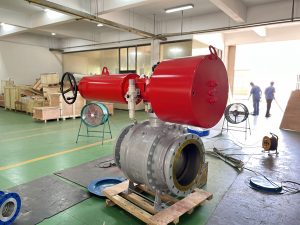
Operation
On-off valves and control valves work in different ways. On-off valves can only be open or closed. You cannot set them halfway. They act like a gate for the flow. You use them when you just want to start or stop flow. Shut-off valves are a kind of on-off valve. They help stop flow fast if there is an emergency or repair.
Control valves let you pick any spot between open and closed. This means you can change how much fluid moves. You use control valves when you need to control flow, pressure, or temperature. These valves have special parts that move them. Sensors check if the valve is in the right place.
Here is a table that shows how they are different:
| Aspect | On/Off Valves | Control Valves |
|---|---|---|
| Operation States | Two discrete states: fully open or fully closed | Continuous, precise flow adjustment |
| Actuator Complexity | Simple actuators with no feedback loop | Complex actuators with feedback and positioners |
| Application Examples | Fire suppression, irrigation, batch processing | HVAC, chemical mixing, water treatment, food production |
Tip: Pick on-off valves for simple jobs like stopping flow. Use control valves when you need to change flow exactly.
Precision
Precision means how well you can control the flow. On-off valves do not let you make small changes. You only get all flow or no flow. They do not change for pressure or temperature. If you need steady flow, on-off valves will not help.
Control valves give you much better control. You can set them to any opening you want. Some control valves use special systems to keep flow steady, even if things change. These valves can keep flow very close to what you want. They use sensors to make small changes all the time. This helps keep your system safe and working well.
Proportional valves are a kind of control valve. They use electric signals to change how open they are. You can set them from 0% to 100%. These valves use feedback to keep flow steady. You find them in jobs that need exact control, like medical tools or making computer chips.
| Feature | Control Valves | On/Off Valves |
|---|---|---|
| Flow Control | Precise, adjustable to any level | Only fully open or fully closed |
| Accuracy & Stability | High accuracy, automatic compensation | Lower precision, no compensation |
| Flexibility | Adapts to changing flow and pressure | Simple, no fine adjustments |
Note: If you need steady and accurate flow, use a control valve. On-off valves are best for simple shut-off jobs.
Response Time
Response time is how fast a valve opens or closes. On-off valves work very fast. Solenoid valves, which are on-off valves, can switch in just a few milliseconds. You use these valves when you need to stop flow quickly, like in fuel or air systems.
Control valves move slower. They take more time so you can make small changes. These valves need time to get to the right spot. You use control valves when you want smooth changes, not quick ones.
Here is a table that shows how fast they work:
| Valve Type | Typical Response Time |
|---|---|
| On/Off (Actuated) Valve | Fast, usually immediate or near instantaneous |
| Control Valve | Slower, requires fine adjustments for precise control |
On-off valves are best when you need to stop or start flow fast. Control valves are better when you want smooth and steady changes.
Tip: Use on-off valves for fast jobs. Pick control valves for careful flow control.
Automation
When you think about automation, there are big differences. On-off valves are easy to use. You can open or close them by hand. You can also use simple devices like solenoids. New technology lets you control these valves from far away. Wireless systems help you send commands to open or close the valve. WirelessHART is one example. It lets you check if the valve is open or closed. You can get alerts if something is wrong. This helps you watch many valves without walking to each one.
Special controllers work with on-off valves too. These controllers show how long the valve takes to move. They count how many times the valve opens and closes. They tell you if the valve is getting old or worn out. You can fix things before they break. This saves time and keeps your system safe.
Control valves use smarter automation. You can set them to any spot, not just open or closed. Sensors and computers help control flow, pressure, or temperature. These valves talk to control systems with digital signals. They need more power and special parts to move smoothly.
Here is a table that shows the main differences:
| Aspect | On-Off Valves | Control Valves |
|---|---|---|
| Automation Complexity | Simple, open/close commands | Complex, continuous control with feedback |
| Communication | Basic or wireless (e.g., WirelessHART) | Integrated with sensors and control systems |
| Control Type | Binary (open/close) | Continuous, precise modulation |
| Diagnostics | Position feedback, wear tracking, temperature | Advanced diagnostics in control loop |
| Power Requirement | Often only air or simple power | Needs more power for actuators |
Tip: Pick on-off valves for easy and reliable automation. Use control valves when you need exact control and feedback.
Shutoff Capability

Shutoff capability means how well a valve stops flow. On-off valves are made to block flow tightly. You can trust them to stop flow, even with high pressure. This makes them great for emergencies and isolation. Their simple design helps them seal well in tough places.
Control valves are made to control flow, not always to shut off tightly. Some control valves can almost stop flow, but some may leak a little. How tight they close depends on the valve’s design and actuator force. You need to pick the right size and type for good shutoff, especially with high pressure.
Control valves have leakage classes. These classes show how much fluid might leak when closed. Lower classes mean less leakage. You should also check the pressure rating to make sure the valve fits your system.
Note: For the best shutoff, use an on-off valve. If you need both control and shutoff, you might use both types together.
Durability
Durability means how long a valve lasts and how well it works in tough jobs. On-off valves are strong and simple. You can use them in places with high pressure or dirty fluids. Their basic design means fewer parts can break. You do not need to fix them often. This saves you time and money.
Control valves have more moving parts and work harder because they change position a lot. They need regular checks and care to keep working well. Some control valves are built for tough jobs and can last a long time. But they may need more attention than on-off valves.
Always think about how often you will use the valve. Think about what kind of fluids will go through it. Pick a valve that matches your needs for strength and how long it will last.
Tip: Choose on-off valves for simple and tough jobs. Pick control valves when you need steady control, but plan for more maintenance.
Pros and Cons
On/Off Valves
Advantages
On-off valves have many good points for your system. These valves shut off flow quickly and work well in emergencies. Here are some main advantages:
- The design is simple, so you can use and install them easily.
- They open or close very fast, almost right away.
- They work well in tough, wet, or dirty places, especially air piloted types.
- Tight seals stop leaks and keep your system safe.
- They need little care because there are not many moving parts.
- Strong build helps them last long, even if you use them a lot.
Tip: On-off valves are great for isolation, emergency shutoff, and batch jobs. They work in water treatment and oil and gas industries.
Disadvantages
On-off valves also have some problems you should think about. These can change how your system works over time.
- You cannot use them to control flow exactly. They only open or close.
- They can be noisy, especially if they shake or let out air.
- If you use one valve for both control and on-off, it may break or leak.
- Over time, the valve may get slower, especially with tricky actuators.
- It is hard to meet strict leak rules if you need flow both ways.
- If the valve leaks or shakes, you might need to stop your plant to fix it.
Note: Test your valves often to find wear or damage early.
Control Valves

Advantages
Control valves give you more choices in your system. You can change flow, pressure, or temperature as you need. Here are some main advantages:
- You can set the valve anywhere between open and closed for exact control.
- They help keep your process steady and protect equipment and people.
- Smooth movement lets you do careful jobs.
- You save energy because you only use what you need.
- You can use control valves in many places, like chemical plants and power stations.
- Less wear means your equipment lasts longer.
Tip: Control valves help you save energy and keep your system safe by stopping sudden changes.
Disadvantages
Control valves also have some hard parts you should know. These valves are more complicated and need careful setup.
- It can be hard to set them up right for safe and good work.
- They cost more at first because they need special design and parts.
- More moving parts mean more care and more chances for trouble.
- Pressure drops can make your system work less well and may need extra parts.
- In big flow or high back-pressure jobs, they can get too hot.
| Valve Type | Main Advantage | Main Disadvantage |
|---|---|---|
| On/Off Valve | Simple, reliable shutoff | No precise control, noisy |
| Control Valve | Precise, flexible modulation | Complex, higher cost, maintenance |
Note: Think about these good and bad points before you pick the best valve for your job.
Applications
On/Off Valves
You use on/off valves to start or stop flow fast. These valves work best when you need safety and quick action. In water plants, ball valves stop water with a simple turn. Butterfly valves handle strong water pressure and save money. Knife gate valves cut thick liquids and shut tight. Plug valves are easy to fix and need little force.
Here are ways on/off valves help in water treatment:
- Control air, oxygen, and ozone in tanks.
- Add chemicals like chlorine and hydrogen peroxide.
- Handle dirty water with ball sector and pinch valves.
- Control flow in filters and reverse osmosis.
- Use small sliding gate valves for mobile water systems.
- Make sure drinking water is safe and easy to get.
- Manage condensate in flotation systems.
- Control ozone and oxygen for cleaning.
- Test filter membranes in metering systems.
- Handle seawater and concentrate in treatment.
On/off valves keep water systems safe and working well. You can trust them for emergency shutoff and isolation.
Control Valves
Control valves let you change flow, pressure, and temperature exactly. You use these valves for steady and accurate control. In medicine factories, diaphragm valves cost less and keep things clean. Butterfly valves move lots of stuff and meet health rules. Ball valves stop leaks and keep things clean but do not give fine control. Check valves stop flow from going backward and keep systems clean. Stainless steel regulating valves control pressure and flow and are easy to fix.
You use control valves to:
- Keep reactor temperature and pressure steady for making drugs.
- Keep clean air flowing and pressure right for sterile rooms.
- Control fluid flow, pressure, temperature, and level for automatic work.
Modern medicine plants need valves that work in milliseconds and handle many flow levels. Special dome-loaded valves help control buffer mixing, filling, and bioreactor pressure. These valves keep products good and stop contamination.
Control valves help you adjust your process and keep products pure.
Industry Examples
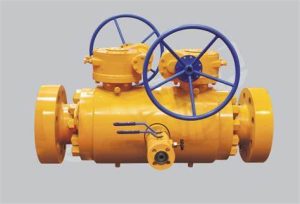
Valves make a big difference in many industries. The right valve makes things safer, faster, and easier to fix.
| Industry | Valve Types Used | Application & Impact on Process Performance |
|---|---|---|
| Power Industry | Gate valves (on/off), Globe valves (control), High-performance ball valves | Gate valves are good for on/off jobs with changing temperature and pressure. Globe valves control flow. Picking the right valve helps efficiency and safety. |
| Oil & Gas Production | Special globe valves (chokes), Gate valves | Globe valves control flow at wellheads with high pressure. Gate valves do on/off jobs. The right valve is important for pressure and flow control. |
| Pipelines | Ball valves, Gate valves | Full-opening valves let cleaning tools pass through. Emergency shutoff valves separate sections. Valve choice affects fixing and safety. |
Picking the right valve for your job makes things work better and safer. Always choose the valve that fits your needs.
Cost and Maintenance
Installation
When you put in a valve, you must think about its type. On/off valves and control valves need different things when you install them. For on/off valves, you should check the size and where you put it. The valve must fit the flow in your pipes. Put the valve where the flow is calm and steady. Do not put it in places with lots of swirling water. For check valves, size matters so they open and close right. Try to put these valves in a straight, flat pipe. This helps gravity work with the valve and stops water hammer. Clean the pipes before you put in the valve. Dirt can hurt the valve or make it stop working.
Control valves need more care when you install them. These valves are made for exact control. You must line up the flanges and hold the pipes so the valve does not bend. Put the valve with the spindle pointing up if the pipe is sideways. This helps the valve move well. Use strainers before the valve to keep dirt out. It is smart to put shut-off valves on both sides. This lets you fix the control valve without stopping everything. Sometimes, you add a bypass pipe to make fixing easier. In steam pipes, use steam traps and drains to protect the valve and stop water hammer. Always follow the maker’s rules for actuators and sensors. Put them above the valve and away from bad weather. Make sure wires and air tubes are tight and dry.
Tip: Good setup helps valves last longer and work better. Always check which way the flow goes and keep the area clean.
Maintenance
You must take care of your valves to keep your system safe and working well. On/off valves and control valves need different care. On/off valves are simple and do not need much work. Check them for leaks and damage every month. Oil moving parts if needed. Test the valve to see if it opens and closes all the way. For hydraulic valves, check the fluid and filters every few months. Clean the valve and the area to stop dirt from causing trouble. You do not need to set on/off valves often, but test them during regular checks.
Control valves need more care and checking. These valves help control flow, pressure, or heat, so they must work right. Look at control valves every year. Check for damage, rust, or leaks near the packing. Setting the valve is very important. Make sure the valve opens and closes to the right spots. Do this at least once a year. Some control valves have digital tools to find problems early. These tools help you plan fixes and stop surprise breakdowns. After five years, you may need to fix or rebuild the valve. This keeps it working well and helps it last longer.
| Valve Type | Maintenance Frequency | Key Tasks | Special Notes |
|---|---|---|---|
| On/Off Valve | Monthly/Quarterly | Leak checks, lubrication, basic testing | Less complex, fewer moving parts |
| Control Valve | Annual/As needed | Calibration, inspection, diagnostics, repair | Needs predictive maintenance, more attention |
Note: Regular care helps you stop big problems and keeps your system working well. Control valves need more checks because they are important for keeping things steady.
Operating Costs
When you pick a valve, think about how much it costs to use. The price is not just what you pay at first. You also spend money on energy, fixing the valve, and when your system stops working.
On/off valves cost less to run. They are simple, so you do not fix them much. You save money on parts and work. These valves use less energy because they only move when you open or close them. Many times, you can use your hand to work them, which is even cheaper. If you use on/off valves for safety shutoff or to block flow, you will fix them less and they last longer.
Control valves cost more to use, but they give you better control. They have more parts, like actuators and positioners. You need to check and fix them more often. But control valves can help you save money in other ways. They let you set flow, pressure, or temperature just right. This means you only use the energy you need. In systems that run all the time, this can lower your bills and waste.
Let’s look at a table to see the differences:
| Aspect | On/Off Valves | Control (Modulating) Valves |
|---|---|---|
| Design Complexity | Simple design, fewer moving parts | More complex, requires actuators and positioners |
| Initial Cost | Generally lower cost | Higher cost due to complexity and components |
| Maintenance Cost | Lower maintenance due to simplicity | Potentially higher maintenance but less frequent due to gradual operation |
| Operating Cost | Lower upfront and maintenance costs | May reduce operational costs through energy efficiency and reduced wear |
| Reliability | High reliability, tight shut-off | Precise control, reduces wear and tear |
| Application Suitability | Suitable for emergency shutoff and isolation | Suitable for continuous flow regulation and optimization |
If you use V-Port ball valves as control valves, you might pay less at first than for globe valves. This makes V-Port ball valves a cheaper choice to start. But you may need to change the seats more often because the ball and seat touch all the time. This can make fixing them cost more. Globe valves cost more and need bigger actuators, but they last longer before you need to fix them. The plug and seat do not touch as much, so you do not have to fix them as often.
Tip: If your system runs all the time, control valves can help you save energy and make parts last longer. On/off valves are best when you want easy shutoff and little fixing.
Pick the valve that fits your job. If you want to spend less and do not need exact control, use on/off valves. If you need to control flow or pressure all the time, control valves can help you save money later by making your system work better.
Selection Tips
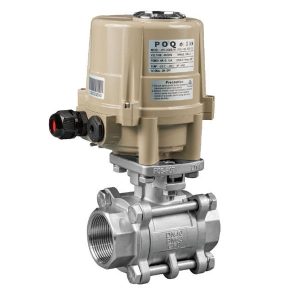
Criteria
When you choose a valve for your project, you need to look at several important factors. Each factor helps you decide if you need an on/off valve or a control valve. Here is a simple way to think about it:
- Valve Purpose: Ask yourself if you need tight control or just simple shutoff. If you want to stop flow completely, pick an on/off valve. If you need to adjust flow, choose a control valve.
- Process Conditions: Check the minimum and maximum flow rates. Look at the pressures before and after the valve. Think about temperature extremes in your system.
- Project Situation: Decide if you are building something new, upgrading, or replacing a part. Your budget and timeline may change based on this.
- Fluid Properties: Know what kind of fluid will move through the valve. Is it a liquid, gas, steam, or slurry? Is it corrosive or clean?
- Valve Function and Actuation: Think about how you want to operate the valve. Do you need it to work automatically, or will you use it by hand? Consider if you need a failsafe or manual override.
- Sizing: Make sure the valve fits your system. Check the normal, minimum, and maximum conditions for temperature, pressure, and flow.
- Maintenance Needs: Ask how often you will need to check or fix the valve. Some valves need more care than others.
Tip: Write down your answers to these questions before you pick a valve. This helps you match the valve to your job.
Mistakes to Avoid
You can make mistakes when you choose a valve. These mistakes can cost you time and money. Here are some common errors to watch out for:
- Ignoring Process Data: If you do not check flow rates, pressures, or temperatures, you may pick the wrong valve.
- Oversizing or Undersizing: A valve that is too big or too small will not work well. It may leak or wear out fast.
- Mixing Functions: Do not expect one valve to do both tight shutoff and precise control. Most valves do one job best.
- Choosing Wrong Material: If you pick a valve that does not match your fluid, it may corrode or break.
- Skipping Maintenance Planning: Some valves need more care. If you do not plan for this, your system may fail.
- Forgetting Safety Features: If you need a failsafe or manual override, make sure your valve has it.
| Mistake | Why It Matters | How to Avoid |
|---|---|---|
| Ignoring process data | Valve may not fit your system | Always check system specs |
| Oversizing/Undersizing | Poor performance, leaks, wear | Size valve for real needs |
| Mixing functions | Valve may fail at both jobs | Use right valve for purpose |
| Wrong material | Corrosion, damage, leaks | Match valve to fluid |
| No maintenance plan | Unexpected breakdowns | Plan regular checks |
| No safety features | Risk of accidents | Add failsafe/manual option |
Note: Take your time and check each step. This helps you avoid costly mistakes.
You now know the key differences between on/off valves and control valves. On/off valves give you quick shutoff for safety and isolation. Control valves help you adjust flow with precision. Always match the valve type to your system’s needs. Think about cost, how complex your process is, and how much control you want. If you feel unsure, talk to a valve expert for the best advice.
Tip: The right valve choice keeps your system safe, efficient, and easy to maintain.
FAQ
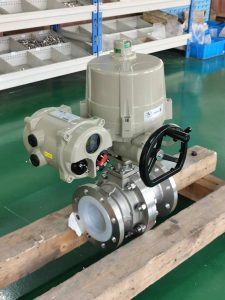
What is the main difference between an on/off valve and a control valve?
You use an on/off valve to start or stop flow completely. You use a control valve to adjust flow to any level you want. On/off valves work like a switch. Control valves work like a dimmer.
Can you use an on/off valve for flow control?
You should not use an on/off valve for flow control. These valves only open or close. If you try to control flow with them, you may damage the valve or cause leaks.
Where do you usually find control valves?
You find control valves in places that need steady flow, pressure, or temperature. These include chemical plants, water treatment systems, and heating or cooling systems. Control valves help keep processes safe and efficient.
How do you choose the right valve for your system?
You should look at your process needs. Ask if you need simple shutoff or precise control. Check fluid type, pressure, temperature, and how often you will use the valve. Always match the valve to your job.
Do on/off valves need much maintenance?
On/off valves need little maintenance. You should check them for leaks and make sure they open and close fully. Their simple design helps them last a long time with basic care.
Are control valves more expensive than on/off valves?
Yes, control valves usually cost more. They have more parts and need special setup. You pay more at first, but you get better control and can save energy in the long run.
Can you automate both on/off and control valves?
You can automate both types. On/off valves use simple actuators or solenoids. Control valves use advanced actuators and sensors for precise movement. Automation helps you run your system safely and easily.
What happens if you use the wrong valve type?
If you use the wrong valve, your system may not work well. You could get leaks, poor control, or even damage equipment. Always pick the valve that fits your process needs.
